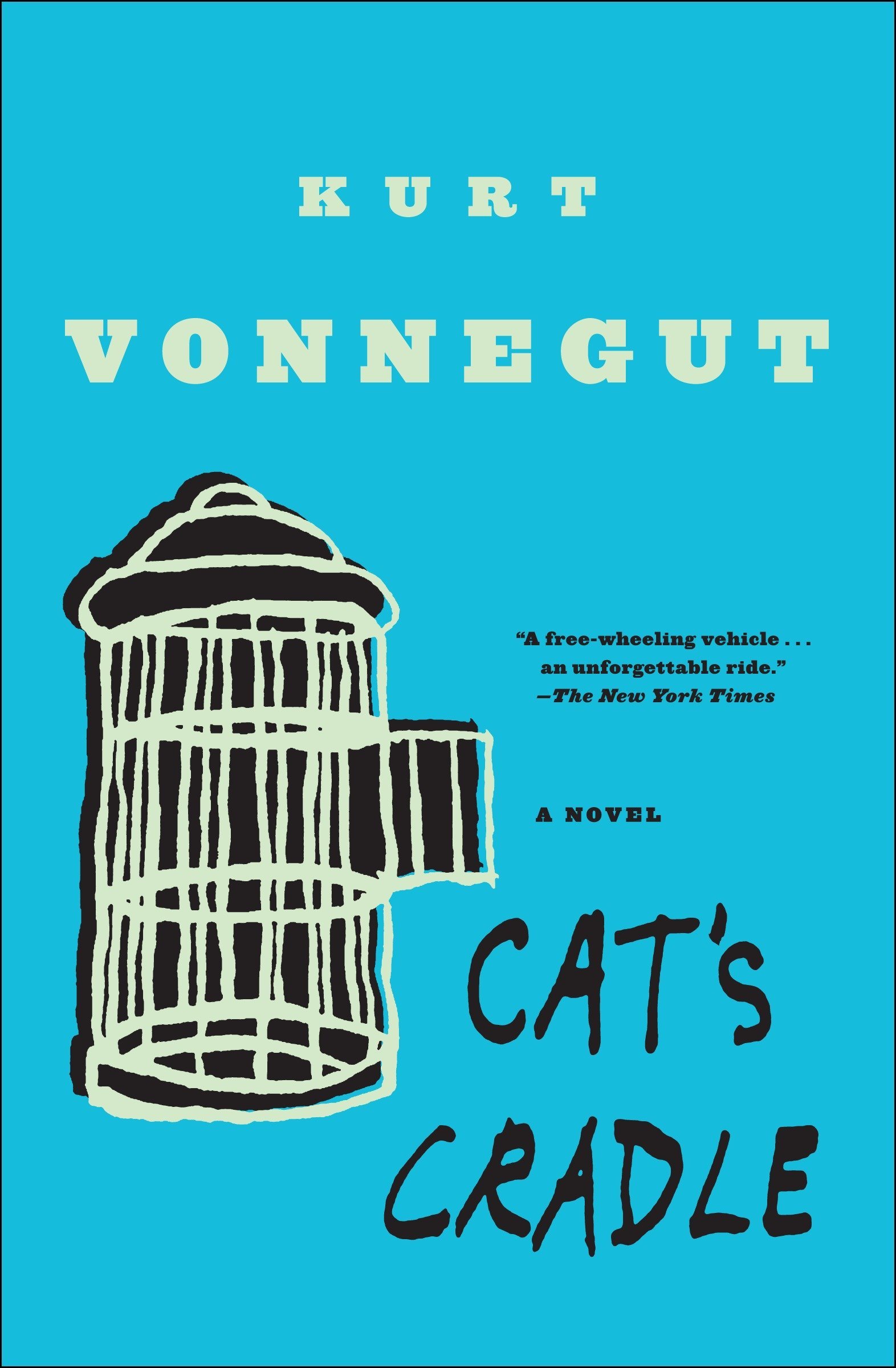My Bokonist warning is this: Anyone unable to understand how a useful religion can be founded on lies will not understand this book either. So be it. — Cat’s Cradle , Kurt Vonnegut
I must admit that no book has challenged my existential thinking more than Kurt Vonnegut’s Cat’s Cradle. From the opening chapter about the novel’s religion of Bokonism, I knew that I would be continuously thinking on my feet about the story’s underlying messages on life, religion, and humanity.
The novel revolves around a writer metaphysically telling us a factual book, which ironically he claims he never finishes writing, titled The Day the World Ended. In his journey, he encounters a multitude of different characters and ultimately goes on a deep dive to discover the religion of Bokonism that began on the island of the Republic of San Lorenzo. The fact that the novel is ultimately a satirical, apocalyptic tale of science fiction speaks to the absurdity that is spread throughout Vonnegut’s book.
Published in 1963, some of the novel’s terminology can be slightly outdated. But an interesting note to keep in mind when reading is the Cold War era of its publication date. Knowledge of Cold War history can definitely help to draw connections to its underlying meanings. Beyond historical references here and there, I could not have expected a more powerful reading. I mean, I probably should have, considering the immense praise I found on the back of the book. But as I ventured deep into Cat’s Cradle, I continued to be more and more interested in the writer’s obsession with Bokonism, almost following along on his trail to learn more about the religion’s history.
There is also smart humor embedded into the novel, a feature one would expect from satire. This humor is not the type to make you complete the actions in the acronym of LMAO, but its a facet of the writing to help you think deeper about its meaning. I found most of the humor based in the absurdity of the story, both from the events that transpire and the way the narrator tells his story. Plus, it was pretty difficult to think that much of the terminology in Bokonism wasn’t simply gibberish Vonnegut invented on the spot.
To fully appreciate Vonnegut’s writing, I seriosuly had to take a step back and almost put myself into an English classroom setting to dissect the events in the novel. For that reason, I do think this book pushes slightly beyond the boundaries of casual reading. I definitely took the time to scour the internet when certain clues piqued my curiosity. But even without a deep dive into the novel’s mysteries, I think the novel asks us why we should even care about the mythos of Bokonism or The Republic of San Lorenzo in the first place.
If this book was an adventure, I’d consider myself as Dorothy being whisked away from Kansas right into the middle of a Star Wars battle. The novel broke down the many aspects of society that I have become familiar with and its conclusion left me questioning not only the actions in my life, but the motives of human behavior throughout history. In the midst of our busy, or maybe not so busy, lives, take the time to experience Cat’s Cradle. It even has a bright, colorful book cover. What’s not to like?
